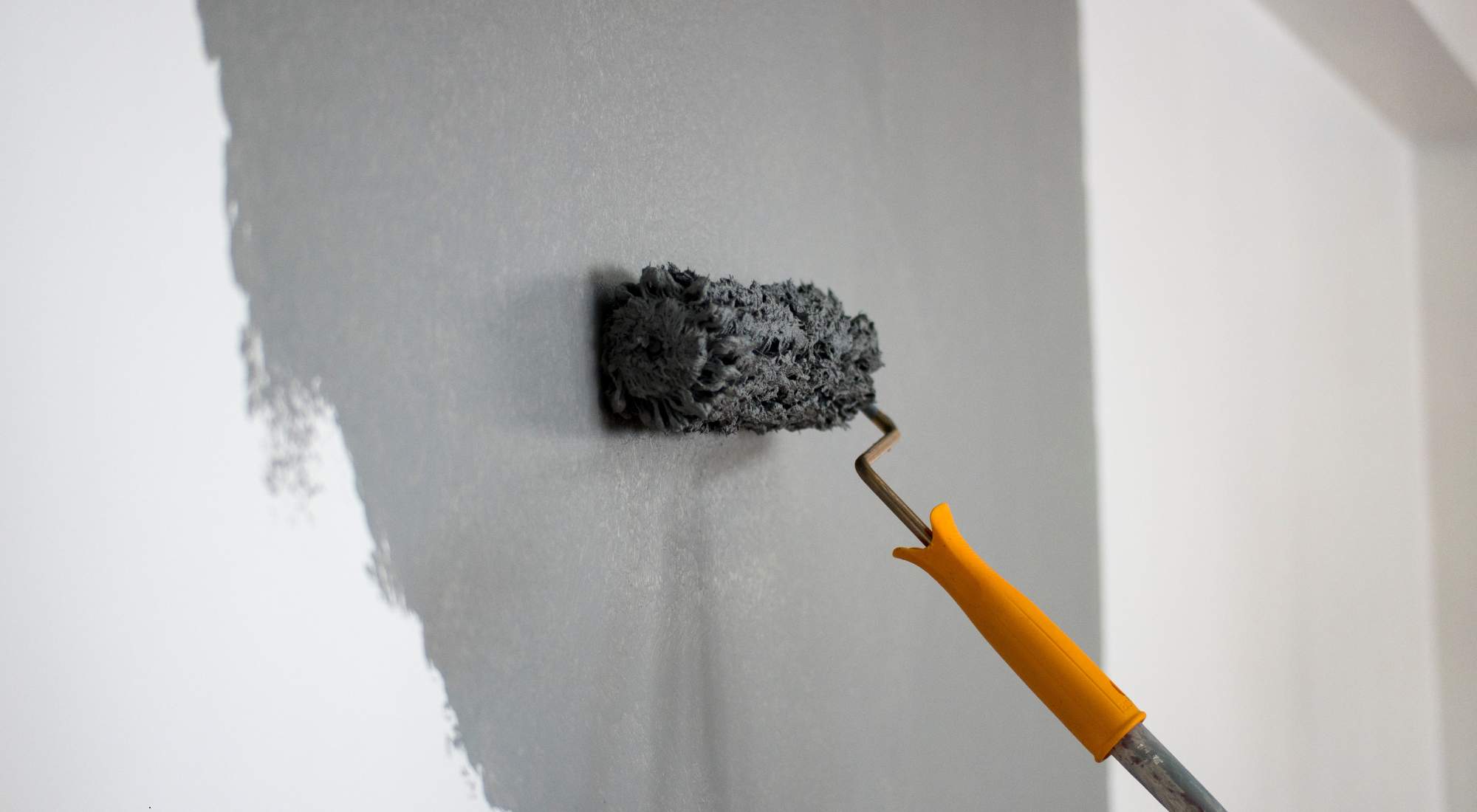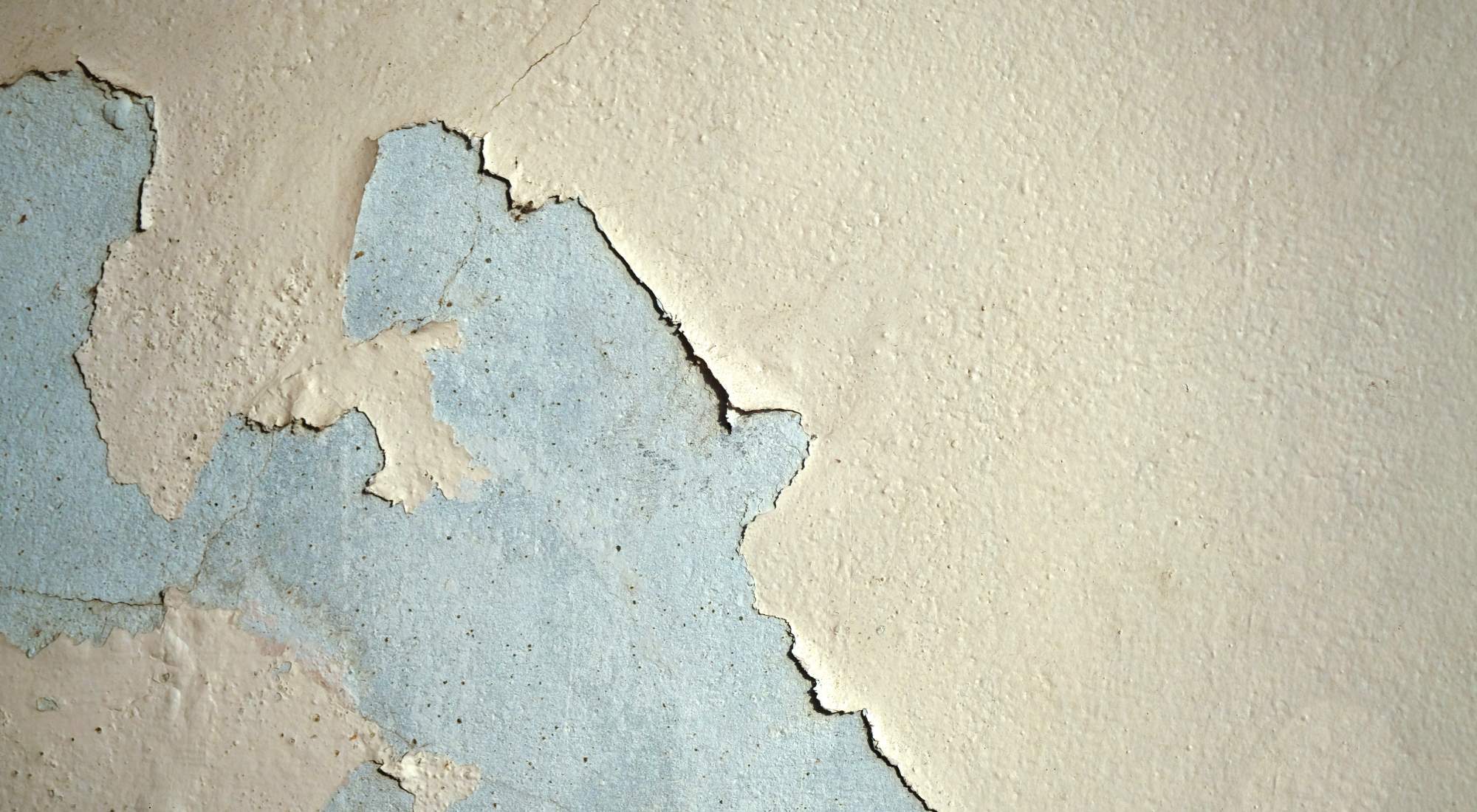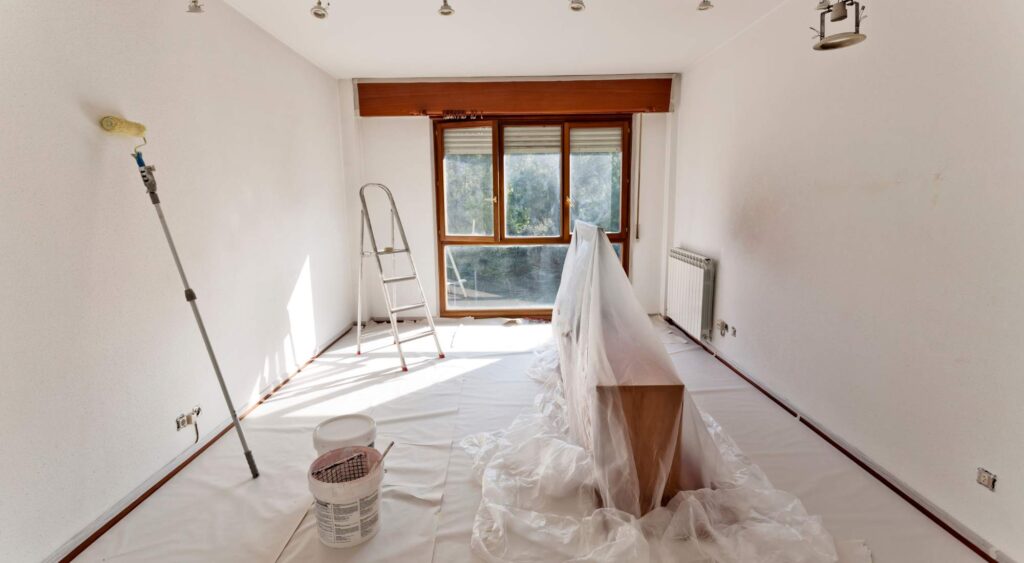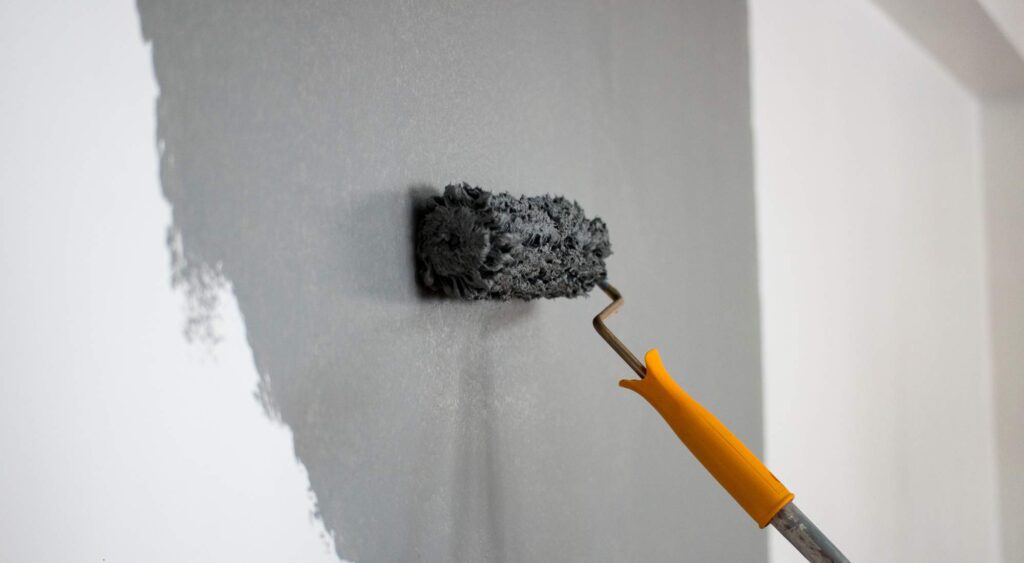You love your old house for its charm and appealing design, but those sickly yellow walls just have to go. It’s time for a change. Now…how to approach the old paint. If your home was built prior to 1978, when the use of lead-based paint was banned, you might have a dilemma on your hands.
If you suspect that a surface in your home is covered with lead paint, it’s important to know exactly what you’re dealing with. Being informed will help you stay safe.
We’ll explain what steps you should take and what you should avoid when undertaking this kind of painting project. We’ll also answer questions most people have about painting over lead paint so you can feel ready to tackle the problem of an unattractive or worn down interior on your own.
Table of Contents
- Can You Paint Over Lead-Based Paint?
- The Dangers of Lead Paint
- 5 Dos And Don’ts of Painting Over Lead Paint
- Frequently Asked Questions About Painting Over Lead Paint
- Avoid the Dangers of Lead Paint: Trust Two Brothers Painting To Safely Repaint Your Home
Can You Paint Over Lead-Based Paint?
Encapsulation (i.e. painting over lead-based paint) can be a safe and less expensive way to approach walls with lead-based paint. The alternative — removal of the paint — can cost a great deal and create an even larger hazard than existed before.
Professionals who are dealing with lead-based paint should comply with the lead renovation, repair, and painting program (RRP) rules to ensure their own safety and that of their customers. If you are doing the project yourself, be sure to research the relevant safety guidelines and protocols.
The Dangers of Lead Paint
Lead paint is not something to deal with casually. It is a real hazard that could have disastrous health effects. There is no safe level of exposure to lead. Although brief but intense periods of exposure may have immediate consequences, symptoms may not appear right away. Rather, toxicity can gradually increase as more lead is absorbed into the body over time.
In either case, exposure to lead may cause the following:
- Respiratory problems: Inhalation of lead dust from sanding, scraping, or otherwise disturbing surfaces may lead to chronic obstructive pulmonary disease, asthma, or lung cancer.
- Lead poisoning: This occurs when lead levels in the blood reach the point of toxicity and can have a broad range of symptoms (digestive, neuromuscular, and neurological). This can happen by inhalation or ingestion of lead dust or paint chips. Young children are particularly susceptible to lead poisoning because their bodies absorb 4-5 times more lead from a given source than adults do. Acute symptoms of lead poisoning may result from brief periods of intense exposure and include:
- Stomachaches
- Headaches
- Nausea
- Fatigue
- Irritability
- Reproductive harm: Babies can be harmed in utero if the mother is exposed to lead. Miscarriage or preterm birth, low birth weight, brain or kidney damage, and learning/behavioral problems are some of the possible effects on the developing child.
- Developmental problems: Because children’s nervous systems are still developing (and at such a fast rate), they are more likely to experience cognitive, behavioral, hearing, and speech problems as a result of lead exposure.
Hiring professionals, like Two Brothers Painting, can help protect you from the dangers of lead exposure. Call us today to learn about our services.
5 Dos And Don’ts of Painting Over Lead Paint
#1: Do Your Research and Test Your Paint
Do some research into the dangers of lead paint and how you can contain the hazardous material to keep you and your family safe. Decide on the best way to go about testing your paint.
Of the three options available to you — using a test kit, sending a paint sample to a lab, and hiring a professional — the first is not always accurate, and the second may be time-consuming.
- Test kits: Test kits use chemicals that change color when they react with lead. They can be found in your local hardware or paint store, but they are not recommended by the EPA because they can give false positives or negatives. If you go this route, do multiple tests of the same area in order to decrease uncertainty.
- Paint chip sampling: You’ll need to identify an accredited lab and follow their instructions for removing a (usually) four-square-inch section of the paint, including the layers underneath, properly packaging it, sending it to the lab, and safely containing the paint from the area you disturbed. A result of 0.5% of lead in the sample signifies that the paint is lead-based.
- Professional (X-ray fluorescence): A trained, certified lead inspector uses a handheld machine designed to detect the energy emitted by the materials in the paint. Because each element emits a unique amount of energy, this reading can be used to determine if lead is present. It is converted to milligrams per square centimeter. A reading higher than 0.5 mg/cm2 constitutes a positive reading.
#2: Do Follow Safety Precautions
The following actions will protect you from inhaling, ingesting, or coming into contact with lead during renovation:
- Secure drop cloths to the floor under the area to be worked on.
- Run an air purifier with a HEPA filter to remove lead dust from the air.
- Keep the area clean to avoid cross-contaminating.
- Keep children away from the area.
- Wear gloves, goggles and/or a face shield, a respirator, and protective clothing, such as coveralls.
#3: Don’t Disturb the Surface
Avoid putting any friction against the surface of the walls — this means no sanding or scraping — to avoid releasing lead dust particles into the air. Just wipe the surface with a warm, damp cloth to clean any loose debris, dirt, or grease. Be sure it is thoroughly dry before painting to ensure proper paint adhesion.
#4: Do Dispose of Waste Responsibly
Even your best efforts might not be enough to prevent some lead chips or dust from being released. For this reason, dispose of everything you use while painting over lead-based paint, including:
- Protective wear
- Gloves
- Drop cloths
- Tape
- Paint brushes or other tools
Clothing should be washed immediately, separated from other clothes and with an extra rinse or two. This will help you prevent spreading lead contaminants all around your home.
#5: Don’t Use Regular Paint To Encapsulate the Lead Paint
Regular oil- or water-based paint will not work to safely encapsulate lead paint. Instead, use a special paint that qualifies as an encapsulant because when it dries it creates an effective barrier between the paint and the environment.
You can find three kinds, which vary in terms of their composition and mode of application, in local paint stores:
- Non-reinforced liquid coating: Applied with a brush, roller, or spray.
- Liquid coatings reinforced with cloth, mat, fibers, etc.: Applied with a brush, roller, spray, or trowel.
- Materials adhered with adhesive: Installed in a two-step process including application of an adhesive followed by installation of the product.
Keep in mind the following caveats when deciding whether an encapsulant will work on the surface intended:
- Full encapsulation is not guaranteed if the paint is applied to a surface that experiences regular friction, such as floors, drawers, and door frames.
- Badly deteriorated paint should not be covered with an encapsulant because when the paint underneath chips so will the encapsulant.
- Encapsulants will not adhere well to a glossy paint surface. A patch test should be performed on the area before painting the entire wall. This is to ensure proper adhesion and weight-bearing capability of the paint layers underneath.
Do Follow EPA Guidelines
If you’re planning to do the work yourself, you still need to make sure you follow EPA guidelines. These include:
- Remove all items and furniture from the work area and contain it until after you’ve cleaned up the mess from your project. This includes turning off air or heat coming into the room and sealing off vents and windows.
- Wear proper personal protective equipment, including a N-100 certified respirator, disposable shoe covers, eye protection and gloves, and a painter’s hat. Avoid eating or drinking in the work area, and be sure to wash your hands and face when you take a break.
- Keep dust to a minimum by using a spray mister or pump sprayer.
- Remove all dust, debris, and residue from the area using a vacuum with a HEPA filter. Wipe down all surfaces with a wet cloth until the cloth no longer picks up any material.
Frequently Asked Questions About Painting Over Lead Paint
What Happens if You Paint Over Lead-based Paint?
You can paint over lead paint safely if you follow the EPA guidelines and remember what we’ve discussed here. No illness should result if you comply with these professional recommendations. If you still feel uneasy, our team of Portland painting experts can determine if your lead-based paint is properly encapsulated.
When To Call the Pros
Encapsulation is not always an option. If any of the following scenarios apply to the area in question, it would be best to hire a professional who can safely remove lead paint according to EPA requirements:
- The paint is peeling or flaking
- The surface receives a good deal of friction, whether by being walked on or rubbed against nearby surfaces
Contact Two Brothers Painting for information about how we address the problem of lead paint in your home.
How Do I Prepare a Surface With Lead Paint for Repainting?
When you anticipate prepping a room, you probably envision a whole lot of sanding and scraping. When painting over lead paint, you get to leave that part out. All you need to do to prepare the surface is:
- If the paint is not chipping or peeling, use a wet cleaning method to clean it. Warm water with a mild soap or cleaning solution is usually sufficient.
- Paint the area with a certified encapsulant, following the manufacturer’s instructions.
Avoid the Dangers of Lead Paint: Trust Two Brothers Painting To Safely Repaint Your Home
If you live in the Portland area, let Two Brothers Painting handle your interior or exterior painting project. Our reliable, experienced team can handle the details of ensuring that any lead paint is removed or contained.
We will go a step further by:
- Helping you decide on the best shades to complement your desired color scheme
- Covering your furniture and carpets
- Returning everything to its original location after we perform the high-quality paint job your home deserves
Contact us today to schedule an estimate for your lead paint encapsulation project.





